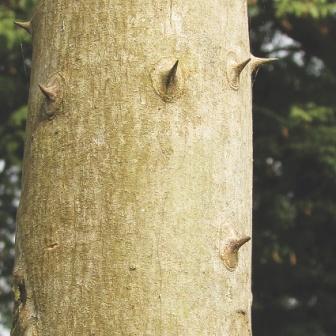Natural Regeneration :
- Naturally regenerated by seeds and coppice.
Artificial Regeneration :
- Artificially propagated by Direct seed sowing.
Seed collection and Storage :
- Seeds are collected from February – April
- Collected seeds are dried in sun and stored in gunny bags.
- Germination capacity is 80 – 90 %
- Seeds are viable for 12 months.
Seed Treatment :
- Cold water treatment for 24 hours.
Nursery Technique :
Nursery raised seedlings :
- 3-4 months old seeds lings are opted for planting n the onset of monsoon.
- Pits size of 30 cm3 is adopted.
- Minimum spacing is 5 m x 5 m which may be thinned to 10 m x 10 m as the tree matures.
- Survival percentage is 70-80%
Plantation technique :
- 3-4 months old seeds lings are opted for planting n the onset of monsoon.
- Pits size of 30 cm3 is adopted.
- Minimum spacing is 5 m x 5 m which may be thinned to 10 m x 10 m as the tree matures.
- Survival percentage is 70-80%.
Care & Disease Control :
- Regular weeding ad soil working will stimulates the growth.
Irrigation :
- It is resistant to periodic waterlogging for up to 2 weeks, but it prefers well drained sandy loams
Recommended Harvest :
Yield :
- Approximately 150 to 175 tons/ha.
Agro Forestory :
Boundary or barrier or support:
- In India, it is planted as a live hedge around cultivated gardens.
- When the cuttings are stuck on the ground, they root quickly to give live hedges.
- It has been used India as support for pepper and grape vines, by virtue of its quick growth and suitable bark.
Major uses :
- In coastal areas it is used for rafts, fisherman’s float and catamarans
- The tree is extensively cultivated for live fence and hedges.
- It acts as wind break in coastal regions.
- It is also planted as a shade tree in tea and coffee plantations.
Market details :
- Approximately Rs.2800 to Rs.3000/ton.








